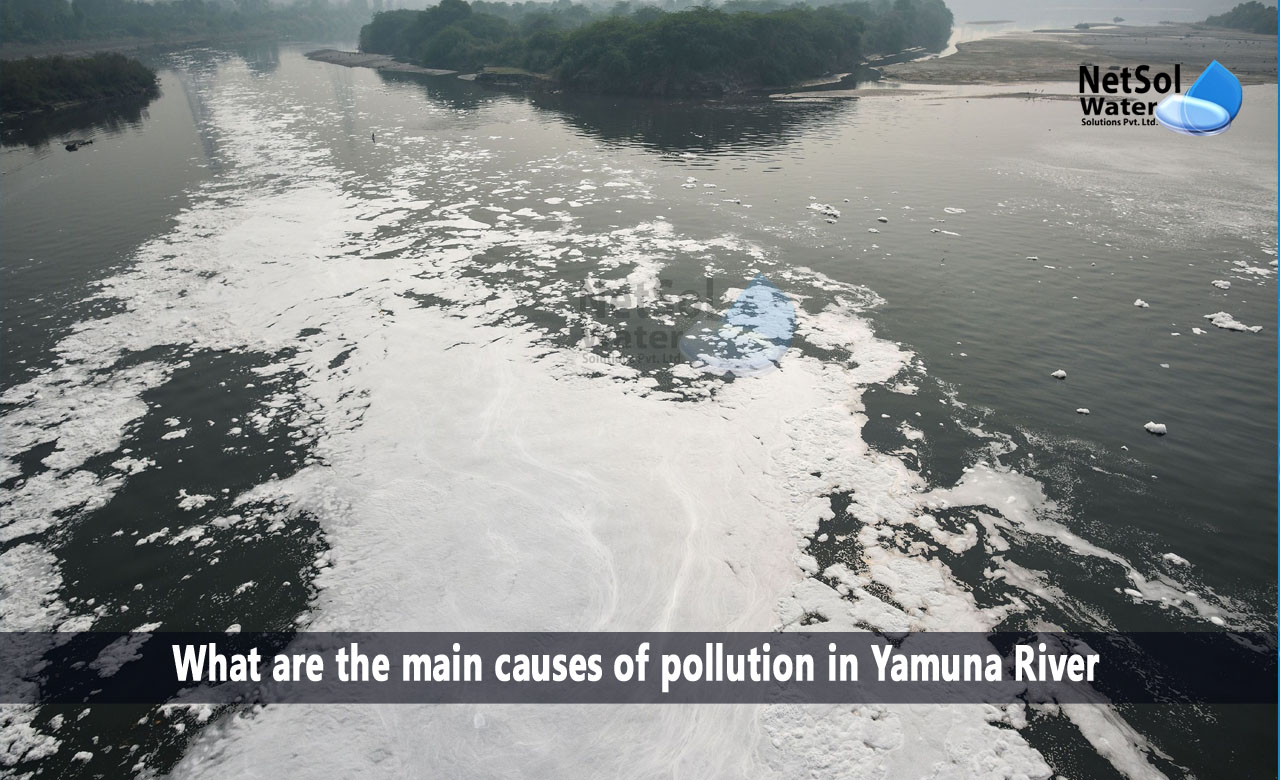Yamuna is one of the most polluted rivers not just in North India, but throughout the entire nation. When we think of a river, we typically picture an unending flow of azure water, but Yamuna is not one of those rivers now.
Blue water is infrequently visible, especially close to Delhi. The Yamuna River is now India's most polluted river as a result of rubbish disposal and sewage drainage.
Let's talk about all the main causes of pollution in Yamuna and the reasons why it is polluted and what Government is doing to protect it!
History of the Yamuna River
The Yamuna starts in Uttarkashi, Uttarakhand, at the Yamunotri glacier. It originates in a number of significant towns, including Agra, Mathura, and Delhi, and flows to Prayagraj, Uttar Pradesh, where it meets the Ganga. The river is 1370 kilometres long.
The Yamuna is the Ganga's principal tributary river. It was once the main source of water for millions of people, but not any longer. More than half of Delhi's total waste is dumped into the Yamuna, causing the degradation of the sacred river.
What are the main causes of pollution in Yamuna River?
1. Delhi's generation of waste
Do you realise how much Delhi actually contributes to Yamuna pollution? The 22 km of Yamuna between Okhla Barrage and Wazirabad are completely accountable, for the pollution that makes up 80% of the river.
The majority of the pollution in the river comes from sewage waste which Delhi produces. Just sewage and industrial effluents run downstream of Wazirabad during the summer. Hardly less water is released from these barrages to the downstream Yamuna during the dry months, making Okhla Barrage the river's exit point in Delhi.
Instead, effluents from Noida and East Delhi enter the river when discharges from the Shahdara drain, join it downstream of the barrage. Although, there are numerous additional factors, Delhi's waste output is the main reason for the Yamuna River's pollution. To stop these pollutions, the capacity of sewage treatment needs to be enhanced as soon as possible.
2. Agriculture-related pollution in the Yamuna River Basin
According to the agriculture department, 12% of the Yamuna basin is covered in forest, 27% is wasteland, 53% is agricultural land, and the remaining 95% is made up of towns, villages, and cities. 53% of agricultural land uses pesticides which directly contribute to Yamuna pollution. Fertilizer breaks down into ammonia, which aids in lowering the water's oxygen concentration. Aquatic animals perish when there is less oxygen in the water.
Yamuna River water is currently so contaminated that it is impossible to envision the presence of healthy marine life. There would undoubtedly be some, but they would all include harmful microorganisms.
Large-scale agricultural areas in Haryana also significantly contribute to the pollution of the Yamuna. 5100 tonnes of pesticides were consumed in Haryana in the years 1995–1996; of these, 600 tonnes were Benzene Hydrochlorides (BHC).
The Yamuna river basin's agricultural land is the second most significant source of pollution. It is necessary to promote a change towards organic farming and Zero Budget Natural Farming (ZBNF), especially along the banks of the Yamuna River.
3· Yamuna Basin landslide
Water contamination is another effect of the landslide near the Yamuna river basin. Typically, it takes place when it rains. All of the soils and solid garbage that have been dumped along the riverbank, are washed away by the water when the water level is high. Although, a landslide is not an issue that humans caused, but they can help to stop it.
A landslide of the river basin can be prevented by increasing the number of trees planted along its banks, but first the government needs to implement effective awareness-raising initiatives for the locals. By offering some incentives for each tree planted, the government can encourage villagers to plant trees.
What is Government doing to clean Yamuna?
The Yamuna receives the majority of its contaminants when passing through Delhi because, it is the largest metropolis located close to the river. Nitin Gadkari, the Union Minister for Water Resources and River Development, has unveiled nine different initiatives to clean up the Yamuna.
According to Mr. Gadkari, the administration is already enacting Namami Gange, an action plan to clean the Ganga. And, the minor river will also be cleansed as part of cleaning Ganga.
The government is currently funding a "Yamuna Action Plan" with a budget of 1665 Cr to clean up the Yamuna. The Indian government is receiving assistance from Japan International Cooperation, to implement this action plan successfully.
To carry out this strategy, the Delhi Jal Board has been designated as the nodal agency. For the stage-by-stage implementation of the Action Plan, Delhi is divided into three sections.
· Okhla
· Rithala
· Kandali
A new 35 km sewage pipe with a 38 cr. litter capacity will be built in Kondali. In addition to this, approval has been given for the construction of two new Treatment Plants. Each of these plants will have a 31 Cr litter capacity, and they will be constructed atop coronation towers.
Yamuna Action Plan
The Yamuna Action Plan is a programme the Indian government began, to protect the Yamuna river.
The Central Environmental Control Board carried out a research in 1977–1978 to determine the level and origins of pollution in the Yamuna River. According to the report, domestic waste, industrial waste, and agricultural waste are the three main causes of pollution. Domestic waste makes over two thirds of the total waste dumped in the Yamuna.
Phase-1: The government placed more of an emphasis in the initial phase on cleaning the Yamuna's main channel. Yet they later understood that cleaning the mainstream is impossible without cleaning its subsidiaries.
Phase-2: The Yamuna Action Plan's second phase began in December 2004. The second phase's completion date was extended by five years. The 22 km section of the river that flows through Delhi was the government's primary focus during this period.
Phase-3: In the third stage, which has a seven-year length, 17 projects are now under construction. Phase three of the Yamuna Action Plan includes eleven projects, with three in Uttar Pradesh, three in Haryana, and one in Himachal Pradesh. The overall anticipated budget for these projects' competition is 3941 Cr rupees.
How will nation benefit from the Government’s plan to clean Yamuna?
The nation will gain from the government's efforts to clean the Yamuna in a variety of ways:
· For the millions who live close to the Yamuna, it will serve as a lifeline.
· It will draw travellers.
· Seasonal birds will also be seen flying in.
· The fishermen will have more work options as a result.
· A healthy ecology and biodiversity will be encouraged by the clean river.
How can we assist you in cleaning India’s rivers?
Netsol Water is one of India's largest water and wastewater management companies. We are focused on the design, production, and delivery of specialized wastewater treatment plants, commercial water treatment plants, etc. We manufacture top-of-the-line WWTPs, STPs, WTPs, RO Plants, water softeners, and ETPs that are highly successful at removing pollutants, from commercial and industrial water and wastewater.
If you're looking for a reputable business to do manufacture and yearly maintenance of your water treatment plants and wastewater treatment plants, go no further than Netsol. We have many years of experience in this industry, and are equipped to handle any task related to water and wastewater treatment. Call us at +91 9650608473 or use our online platform to reach out to us right now.



